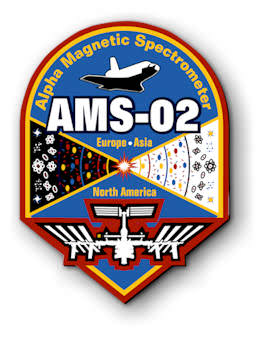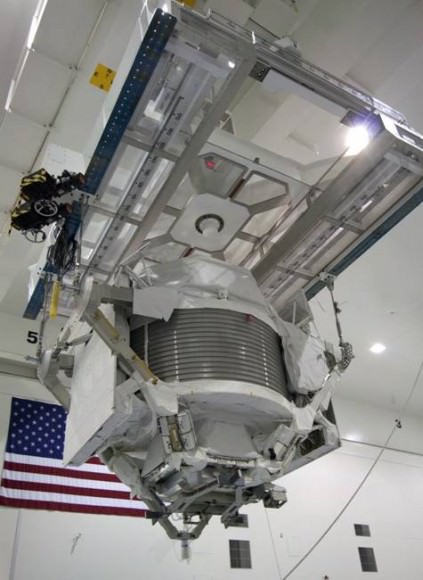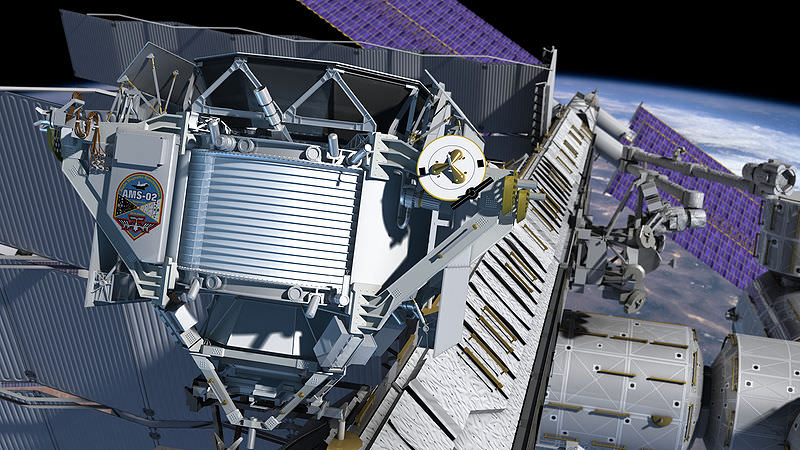[/caption]
The Principal Investigator (P.I.) for the Alpha Magnetic Spectrometer-2 (AMS-02) experiment, Professor Samuel Ting, says that the experiment is already accruing data as it awaits its February 2011 launch date. Scheduled to fly aboard the final flight of the space shuttle Endeavour, STS-134, AMS-02 will search through cosmic rays for exotic particles, antimatter and dark matter. The experiment will be mounted to the outside of the International Space Station (ISS) and will require no spacewalks to attach.
While Ting has certain things that he hopes to discover, the most exciting questions – are those that the scientist doesn’t even know to ask yet. Whenever an experiment of this nature is conducted, scientists almost invariably find more questions that they didn’t even know to ask.
The particles that the 7.5 ton experiment is currently seeing have had some of their qualities removed by the abrasive nature of Earth’s atmosphere. This problem will be solved after Feb. 26 when the AMS-02 is delivered to its new home on the space station’s S3 truss assembly. From its high vantage point it is hoped that the experiment will open new windows into particle physics and cause a revolution in humanity’s understanding of the universe.
Ting hopes that AMS-02 will provide data that proves the existence of parallel universes that are composed of anti-matter. It is also hoped that the experiment will also discover particles that contain magnetic and electric particles that are exactly the opposite of ordinary particles. These discoveries could prove verify theories and answer basic questions regarding how the universe formed.

Up until AMS-02, mankind’s understanding of cosmic rays has been limited to measuring light gathered in telescopes such as the Hubble Space Telescope (HST). This experiment will be the first time that charged particles can be studied in the cold vacuum of space – away from the distorting influence of Earth’s turbulent atmosphere.
The AMS-02 P.I. is also hoping to find out what dark matter is made of. This material is believed to be the “glue” that holds the universe together.
Ting found that constructing an experiment that can operate in the microgravity environment of space was very different from building one designed to work on the ground. However the same qualities of space that hindered the program also made it the perfect arena to study cosmic rays. On Earth Ting would utilize particle accelerators to study particle energy. These machines need to be huge to create the desired result, whereas in space, these particles happen naturally.
Ting began work on AMS 16 years ago in 1994; the program grew to include 500 physicists, 16 nations, the Department of Energy and NASA’s Johnson Space Center. When the AMS-02 finally reaches its destination it will employ extremely advanced technology, utilizing powerful magnets to manipulate the particles as they pass through the experiment. The machine is also well-built and will probably last as long as the space station itself.
The first time a Alpha Magnetic Spectrometer was tested in space was on board space shuttle Discovery on STS-91 in 1998. AMS-01 was sent up to prove the concept would work. After this initial success AMS-02 was started, after years of development and a $1.5 billion price tag the second AMS is ready for flight.

Source: NASA


“Ting hopes that AMS-02 will provide data that proves the existence of parallel universes that are composed of anti-matter.”
Imagine the energy and mass pouring out of a junction or intersecting node(s) of parallel universes composed of matter and anti-matter! Would that look something like M 87’s jet(s)? or a fractal atom?
I would be mightily surprised if this tells us anything about parallel universes, or so called multiverse theories. The biggest thing I might expect from this is the detection of decay products of neutralinos. Neutralinos are the supersymmetric partners of the photon, Z and Higgs particle in a single quantum state, where the quantum numbers of these supersymmetric partners are equal. These particles are a main hypothetical component of dark matter. The detection of a peak in energy around 1TeV of electron-positrons would be a signature of these particles. The PAMELA detector has already found signatures suggesting this.
LC